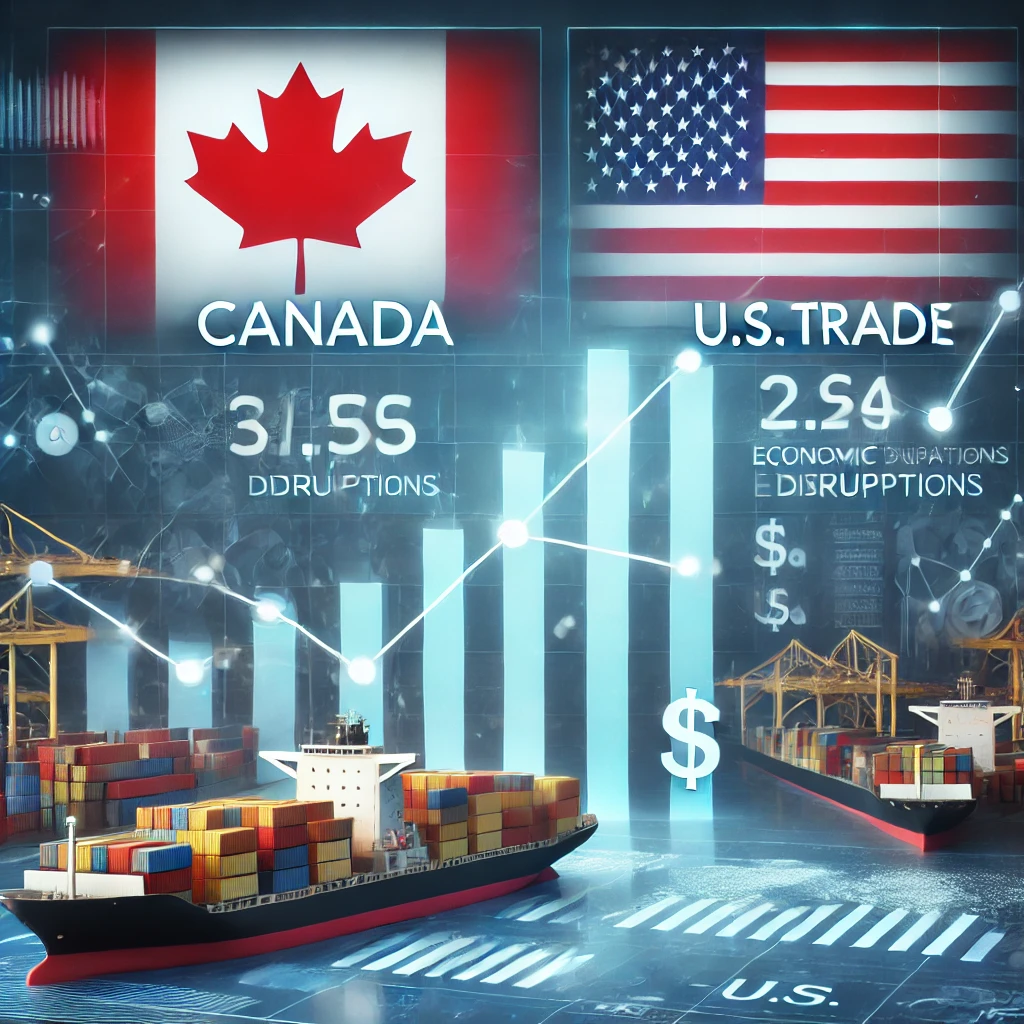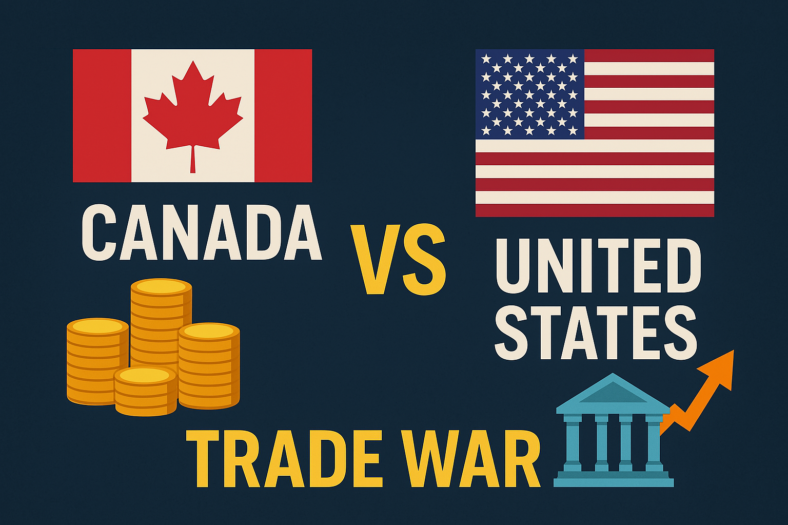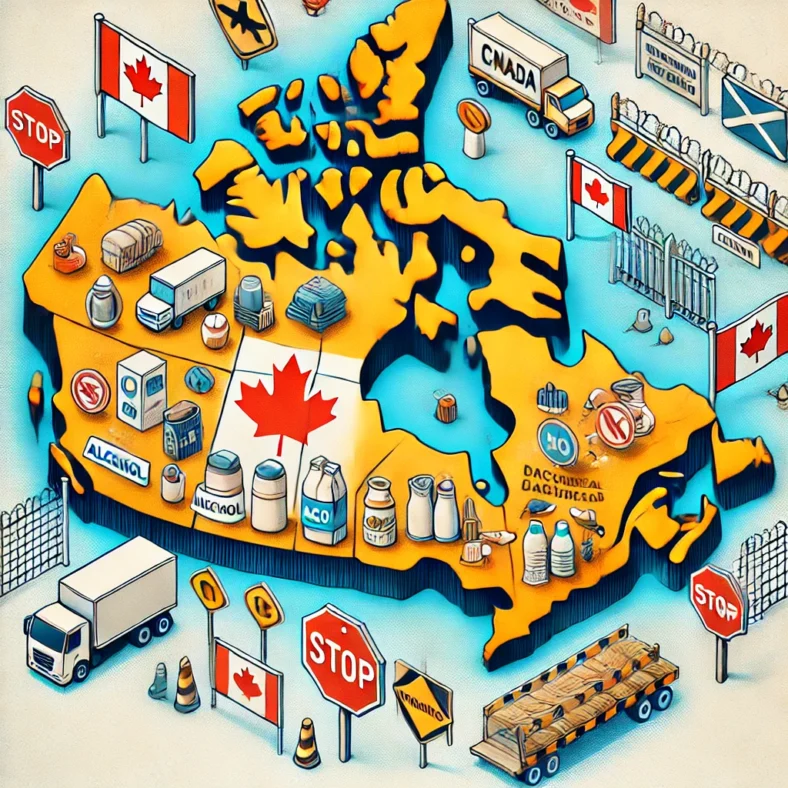Even with a temporary 30-day delay, former U.S. President Donald Trump’s proposed tariffs on Canadian exports to the United States mark a significant shift towards protectionism. The proposed 25% tariff on all non-energy exports and a 10% tariff on energy exports will create major economic disruptions, impacting not just Canada but also the global trade network.
This in-depth analysis examines which Canadian cities will be most affected by these tariffs, shedding light on how deeply integrated trade relations between Canada and the U.S. are and what the economic consequences could be.
Canada-U.S. Trade: A Highly Integrated Economic Relationship
For over a century, Canada and the United States have maintained a deeply interconnected economic partnership. Cross-border trade plays a vital role in both economies, with goods and services moving between the two countries seamlessly.
Recent research suggests that the new tariff policies could trigger a recession in both nations. The impact will be particularly severe in provinces that rely heavily on trade with the U.S., such as:
✔ Alberta – Major crude oil and natural gas exporter
✔ Ontario – Automotive and manufacturing hub
✔ New Brunswick – Key energy and seafood exports
With trade between Canada and the U.S. valued at over $1.2 trillion annually, the proposed tariffs could jeopardize thousands of jobs and destabilize local economies across Canada.
Canadian Cities Most Exposed to U.S. Tariffs
Developing a U.S. Tariff Exposure Index
Using newly available trade data from Statistics Canada, we developed a U.S. Tariff Exposure Index to assess which Canadian cities would bear the greatest economic impact. The index measures:
✔ Export Intensity – The share of a city’s economy that depends on exports to the U.S.
✔ U.S. Export Dependence – The percentage of a city’s total exports that go to the U.S.
Cities ranking higher on both metrics are at the greatest risk of economic disruption.
Top 10 Canadian Cities Most Vulnerable to U.S. Tariffs
1️⃣ Saint John, New Brunswick – 🇨🇦 Energy exports dominate its economy
2️⃣ Calgary, Alberta – 🇨🇦 Oil and natural gas hub
3️⃣ Windsor, Ontario – 🚗 Auto manufacturing at the U.S. border
4️⃣ Kitchener-Cambridge-Waterloo, Ontario – 🏭 Advanced manufacturing and auto parts
5️⃣ Brantford, Ontario – 🚗 Automotive and industrial exports
6️⃣ Guelph, Ontario – 🚜 Agriculture and auto parts production
7️⃣ Saguenay, Quebec – 🏗️ Aluminum exports
8️⃣ Hamilton, Ontario – 🔩 Canada’s steel capital
9️⃣ Trois-Rivières, Quebec – 🌲 Forestry and agri-food exports
🔟 Drummondville, Quebec – 🪵 Wood products and furniture exports
Key Findings: Cities Most at Risk
💥 Energy Exporters Hit Hard – Saint John and Calgary lead the ranking due to their dependence on crude oil and natural gas exports. The 10% tariff on energy products threatens billions in trade revenue.
🚗 Automotive & Manufacturing Hub Under Pressure – Windsor, Kitchener, Brantford, and Guelph are highly exposed to tariffs due to their reliance on auto manufacturing, which requires seamless cross-border trade.
🏗️ Industrial Cities Feel the Pinch – Hamilton’s steel industry is a major supplier to the U.S., making it vulnerable to tariffs on raw materials. Similarly, Saguenay and Trois-Rivières are at risk due to high aluminum and forestry exports.
Economic Impact of U.S. Tariffs on Key Canadian Cities
1️⃣ Saint John, New Brunswick – Canada’s Energy Gateway
🔹 Home to Irving Oil Refinery, Canada’s largest crude oil processing facility
🔹 80% of its production is exported to the U.S.
🔹 Other key exports: seafood and forestry products
The 10% energy tariff will likely result in higher gas prices in the U.S. while putting thousands of New Brunswick jobs at risk.
2️⃣ Calgary, Alberta – Oil & Gas Capital of Canada
🔹 Major exporter of crude oil and natural gas
🔹 Supplies fuel to U.S. refineries in Illinois and the Midwest
🔹 Key industries: oil sands, beef production, and agriculture
Calgary’s economy relies heavily on U.S. trade, making it highly vulnerable to new tariffs.
3️⃣ Windsor, Ontario – The Automotive Powerhouse
🔹 Home to Ford and Stellantis assembly plants
🔹 Supplies auto parts to Michigan and the U.S. Midwest
🔹 Cross-border trade through the Ambassador Bridge
The 25% tariff on auto exports would severely impact Windsor’s economy, as the city’s largest employers depend on the uninterrupted flow of goods between Canada and the U.S.
4️⃣-6️⃣ Southwestern Ontario’s Auto Manufacturing Hubs
🚗 Kitchener-Cambridge-Waterloo, Brantford, and Guelph specialize in:
✔ Auto parts manufacturing
✔ Industrial machinery and equipment
✔ Agricultural exports
These cities play a critical role in the North American auto supply chain, making them highly susceptible to tariffs.
7️⃣-9️⃣ Quebec’s Trade-Intensive Cities
🏗️ Saguenay, Trois-Rivières, and Drummondville are:
✔ Key exporters of aluminum, forestry, and wood products
✔ Supplying raw materials for U.S. construction and auto industries
Tariffs could cause price hikes in the U.S. while disrupting Canada’s key manufacturing hubs.
Cities with Lower Exposure to U.S. Tariffs
Not all Canadian cities are equally affected. Some have more diversified trade markets, exporting more to Europe and Asia instead of the U.S.
🛳️ Coastal cities such as Victoria, Nanaimo, and Halifax ship more goods to international markets, reducing their exposure.
⛏️ Mining hubs like Sudbury focus on global metal exports rather than just the U.S.
What This Means for Canada’s Economy
🔹 The Canadian dollar is expected to weaken, absorbing some of the shock.
🔹 Exporters may pivot to new markets, but this is easier for commodities than specialized machinery and auto parts.
🔹 Government policies, including retaliatory tariffs, interest rate adjustments, and industry support programs, will be critical.
Policy & Business Considerations
To mitigate the economic risks of these tariffs, business leaders and policymakers must:
✅ Diversify trade relationships beyond the U.S.
✅ Develop domestic industries to reduce reliance on exports
✅ Implement targeted economic relief programs for affected sectors
Ongoing monitoring and strategic policy responses will be crucial in navigating the uncertainty created by U.S. protectionist policies.
Conclusion: A Defining Moment for Canada-U.S. Trade
The proposed U.S. tariffs represent a major economic challenge for Canada. Cities with high U.S. trade dependency, particularly those in Ontario, Alberta, and New Brunswick, are most vulnerable.
By adopting smart trade policies and exploring alternative markets, Canada can adapt to these challenges while ensuring long-term economic resilience.
🔹 Stay informed on the latest trade updates and their impact on Canadian businesses at Ratesheet.ca!




















